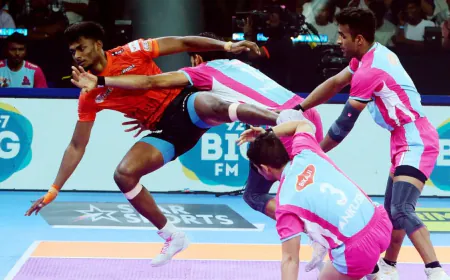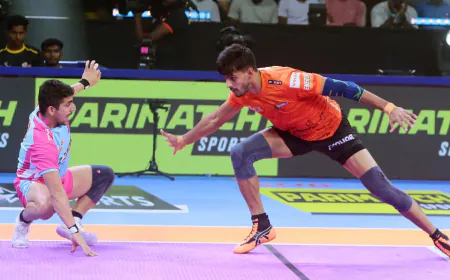Kuldeep Yadav's Straightforward Response on Why He Does Not Play All Three Formats
Kuldeep Yadav provided a candid answer when questioned about why he plays only two formats of cricket. The wrist-spinner broke down his role, workload, and team strategy in choosing him for certain formats.

Kuldeep Yadav is currently one of India's most valuable bowlers in white-ball cricket. He was instrumental in the success of India in the T20 World Cup 2024 and the Champions Trophy 2025. His performance has been excellent as he grabbed 10 wickets from five matches in the T20 World Cup and seven wickets from five matches in the Champions Trophy. Although being in shape and playing well for limited-overs cricket, he is not regular in all three formats of the game. That was something inquired by former Australian captain Michael Clarke, who was interested in knowing why Kuldeep does not play all three formats on a regular basis. The Indian bowler provided a simple and contemplative answer explaining his position in a good manner.
Kuldeep had last played for India in a Test match in October 2024 against New Zealand. Even though he made his debut nearly eight years ago in the format, he has so far played only 13 Tests and taken 56 wickets. Many believe that he can perform well in all three formats and Clarke was one of the loudest in stating that he must be playing all three. Clarke expressed his admiration for Kuldeep's performance during the Champions Trophy and felt that the left-arm wrist-spinner was at his best. But he also admitted that India has certain quality spinners who are fighting for a position in the side, so it's not that simple for everyone to play the games.
Kuldeep explained in detail why he has not been playing all formats regularly. One of the major reasons he mentioned was recovery from hernia surgery. He performed the surgery in November, and it was not easy to get back to full rhythm after being injured. He stated that he had bowled well over the last three or four years but the injury had been a setback. When he got back to cricket, he devoted time to his game by enhancing reading batters. He said that he had always been good at rhythm while bowling but wished to enhance his ability to read the batsmen and adjust accordingly. He also said that the condition of the pitch has a significant role in his performance. He felt that he had bowled well during the Champions Trophy and settled well in the conditions. One fascinating fact that struck Kuldeep was the way wickets are devoured while watching the performance of a bowler.
In the Champions Trophy, he picked seven wickets, which was less than Varun Chakravarthy's nine wickets playing two matches lesser. Despite that, Kuldeep explained that wickets do not always reveal the complete picture of how well a bowler bowled. As the Indian team had four spinners in the tournament, it was difficult to take wickets on a regular basis because there were so many bowlers who were applying pressure on the other team. He clarified that sometimes another bowler could pick up more wickets, but that did not mean that the others were not performing well. He thought that he remained accurate and on target, coming wicket-to-wicket bowling and employing all varieties of variations to torment the batsmen. Kuldeep was the mastermind behind India's Champions Trophy final victory over New Zealand. He removed two vital players, Rachin Ravindra and Kane Williamson, and it proved to be a massive turning point in the match. His pressure bowling and removal of key wickets at the appropriate time was extremely crucial in leading India to the championship. These performances vindicated his selection in the team and demonstrated that he possesses the class and temperament to play at the top level.
Kuldeep's career has been a story of continuity of effort and persistence.
He has had disappointments in the form of injuries and bruises for a spot on the Indian team, but he has always kept working to better himself and deliver whenever given a chance to do so. His reply to Clarke's question was a testimony to his maturity and vast experience of the game. He understands that playing all three forms needs consistency, flexibility, and opportunities, yet he is always set on delivering well whenever he gets the chance. His narrative is inspiring for young cricketers who wish to be successful despite the fact that they must undergo difficulties.
It indicates that disappointments such as injuries don't necessarily have to chart the course of a person's life. Rather, these are chances to learn, atone, and return even stronger. Kuldeep is an apt example of the reality that hard work and persistence might propel an player to unprecedented heights in spite of setbacks. He is today a trusted wheel in white-ball cricket, and if he keeps playing to this level of consistency, it is not impossible that he be given opportunities in Test cricket too. For the time being, Kuldeep is still concentrating on his game and is keen to continue improving and helping the Indian team to win. Whether he plays all three formats or not, he has already made a permanent impression on international cricket. His journey is not yet complete, and the fans will be waiting to see even more match-winning performances from him in the coming years.





















































